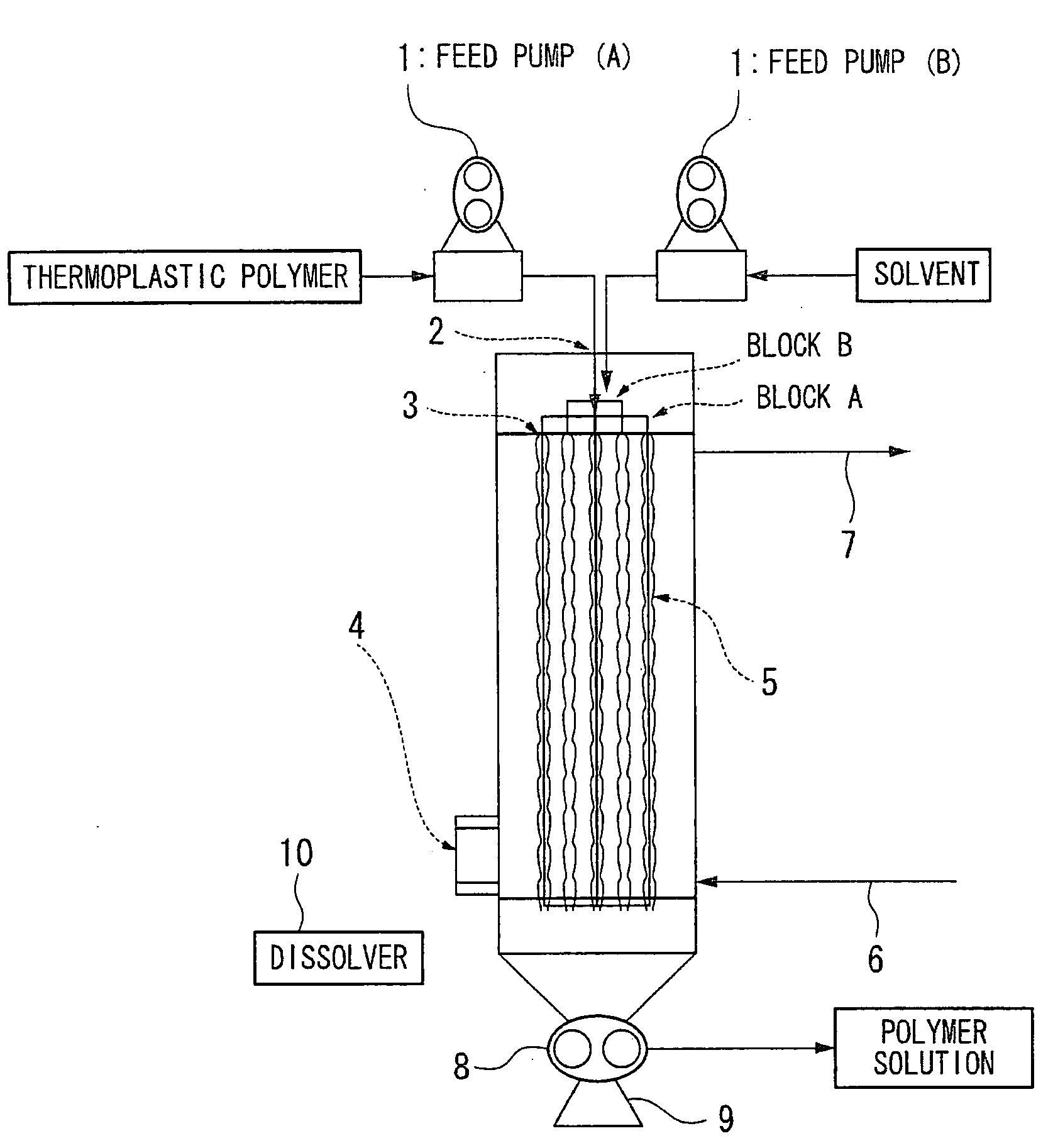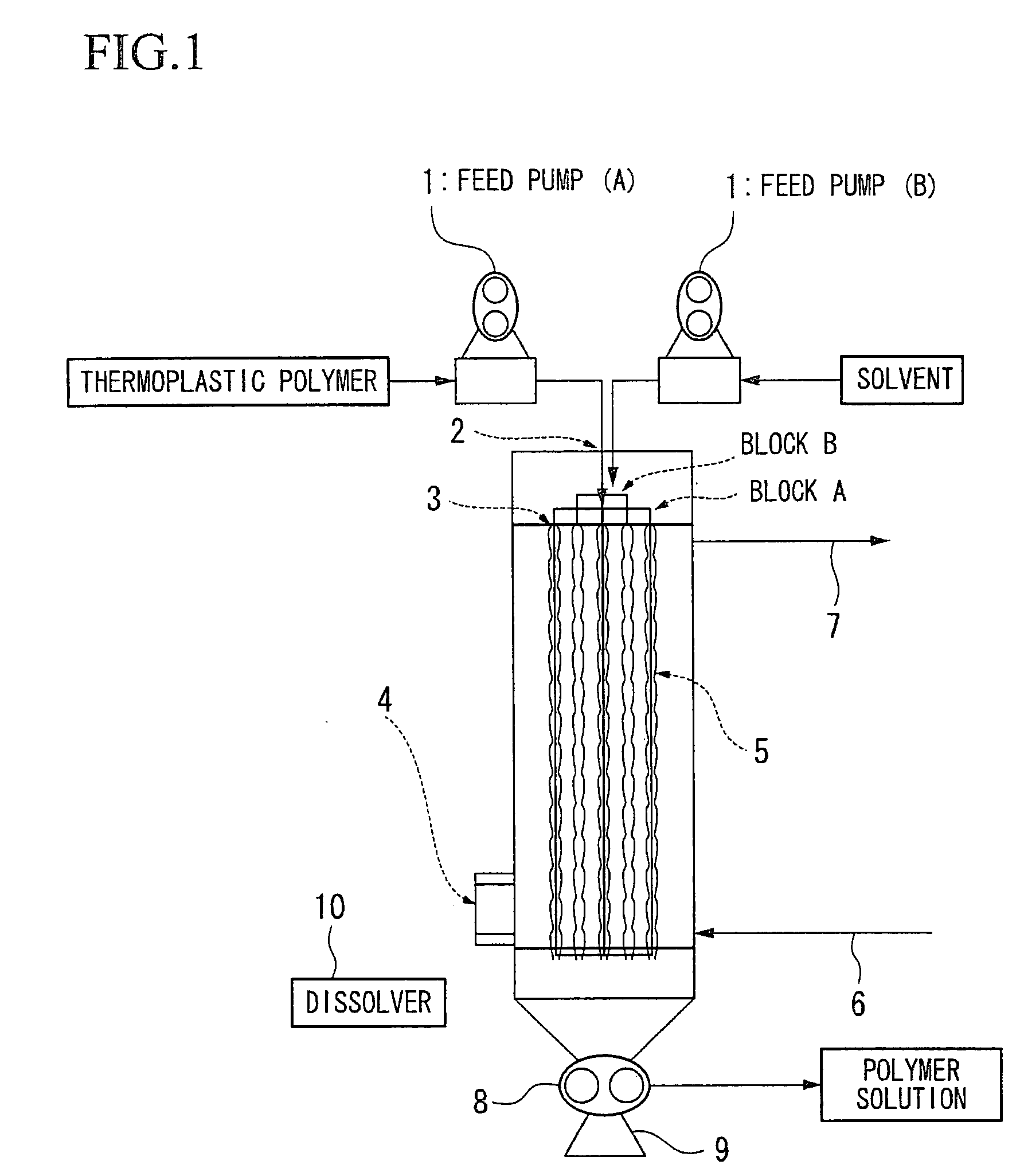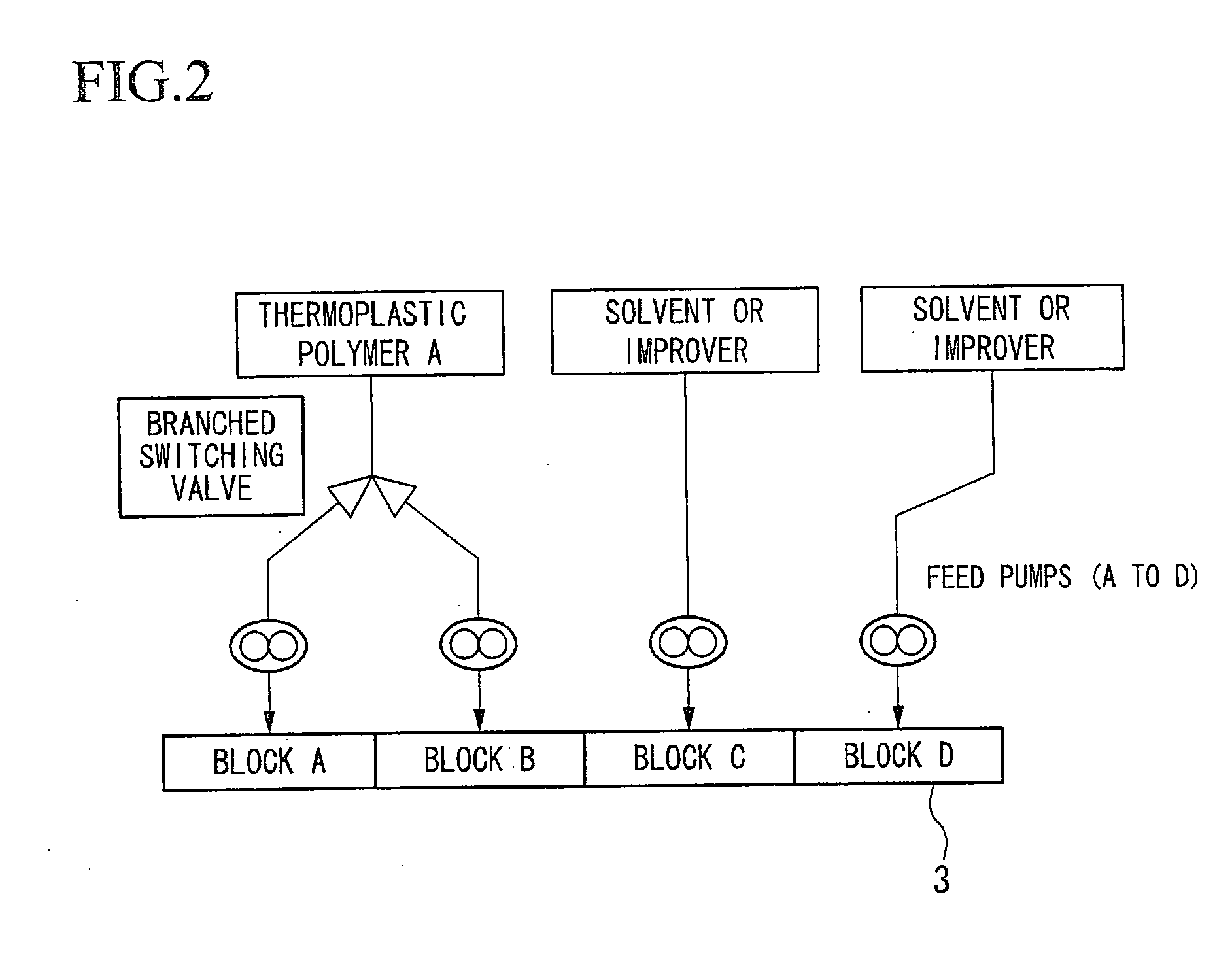Method of Producing Thermoplastic Polymer Solution
a thermoplastic polymer and solution technology, applied in the direction of cleaning process and equipment, cleaning of hollow objects, chemistry apparatus and processes, etc., can solve the problems of slow dissolution rate, overly long time required for the dissolution process, and insufficient dissolution rate of methods in which solid-state polymer is dissolved
- Summary
- Abstract
- Description
- Claims
- Application Information
AI Technical Summary
Benefits of technology
Problems solved by technology
Method used
Image
Examples
example 1
[0298]Using the reactor shown in FIG. 1, a PET resin was dissolved, yielding a PET resin solution.
[0299]The PET resin was melted a temperature of 265° C., and using the feed pump (A) 1, was then discharged from the raw material supply port 2 and through the holes of block A of the perforated plate 3 at a rate of 3.0 g / minute per hole. At the same time, isophorone was supplied as the solvent, and using the feed pump (B) 1, was discharged from the raw material supply port 2 and through the holes of block B of the perforated plate 3 at a rate of 7.0 g / minute per hole.
[0300]These supplied materials were then caused to flow down along the support at an atmospheric temperature equal to the discharge temperature, while the PET resin dissolved in the solvent, and the resulting solution was then discharged from the dissolver 10 using the drainage pump 8.
[0301]The polymer solution was allowed to accumulate at the bottom of the dissolver, and by extracting the polymer solution at a rate that m...
example 2
[0303]Using the reactor shown in FIG. 3, flakes of collected waste PET bottles were melted, and using the feed pump (A) 1, were then supplied from the raw material supply port 2 to the depolymerization reactor 10, and discharged through the holes of block A of the perforated plate 3, in a melted state at 255° C. and at a rate of 7.0 g / minute per hole. At the same time, ethylene glycol was supplied as a molecular weight reducing agent, and using the feed pump (B) 1, was supplied from the raw material supply port 2 to the depolymerization reactor 10, and discharged through the holes of block B of the perforated plate 3 at a rate of 2.3 g / minute per hole.
[0304]These supplied materials were then caused to flow down along the supports at an atmospheric temperature equal to the discharge temperature, while depolymerization was conducted at a reduced pressure of 85,000 Pa, and the resulting reaction product accumulated in the bottom of the depolymerization reactor, and was discharged from ...
example 31
[0315]Using the reactor shown in FIG. 7, a PET prepolymer with a limiting viscosity [η] of 0.46 dl / g, a carboxyl group quantity at the polymer terminals of 32 meq / kg, and a crystalline melting point of 260° C. was supplied from the raw material supply port 2 to the polymerization reactor 10 using the feed pump (A) 1, and was discharged through the holes of block A of the perforated plate 3, in a melted state at 265° C. and at a rate of 10 g / minute per hole. At the same time, a prepolymer produced by copolymerizing 4 mol % of cyclohexanedimethanol with a PET with a limiting viscosity [η] of 0.28 du / g, a carboxyl group quantity at the polymer terminals of 30 meq / kg, and a crystalline melting point of 240° C. was supplied from the raw material supply port 2 to the polymerization reactor 10 using the feed pump (B) 1, and was discharged through the holes of block B of the perforated plate 3, in a melted state at 265° C. and at a rate of 10 g / minute per hole.
[0316]These supplied materials...
PUM
| Property | Measurement | Unit |
|---|---|---|
| Temperature | aaaaa | aaaaa |
| Distance | aaaaa | aaaaa |
| Temperature | aaaaa | aaaaa |
Abstract
Description
Claims
Application Information
 Login to View More
Login to View More - R&D
- Intellectual Property
- Life Sciences
- Materials
- Tech Scout
- Unparalleled Data Quality
- Higher Quality Content
- 60% Fewer Hallucinations
Browse by: Latest US Patents, China's latest patents, Technical Efficacy Thesaurus, Application Domain, Technology Topic, Popular Technical Reports.
© 2025 PatSnap. All rights reserved.Legal|Privacy policy|Modern Slavery Act Transparency Statement|Sitemap|About US| Contact US: help@patsnap.com



